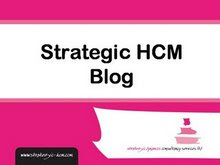Organisation capability consists of three separate types of capital (something which is valued by investors in a private sector company):
- Human capital is the value which is provided by the people working in an organisation. It’s owned by the people not the organisation, but invested by the people if they receive an appropriate return on their investment. When the people go home at the end of a day’s work, they take their human capital with them.
- Organisational capital is the value provided by an organisation’s own business and management structures and processes etc. When people go home, the organisation capital stays in the buildings and technologies of the firm.
- Social capital is an emergent property that results through people working in the organisation. It’s a combination of their connections, relationships, and the conversations taking place within the organisation. If the people leave the organisation, it no longer exists within the people or the organisation.
Each of these three different forms of capital need to be developed in different ways. So for example, organisation capital can be developed in fairly mechanistic ways. Human capital needs developing in ways that acknowledges its intangibility, and the complexity between factors. This is why, while you can redesign a process very quickly, it gets time to get people to use the new process in the right way. Social capital is even more complex and intangible. It’s therefore much more difficult to manage than either of the previous two forms.
But it’s also more important. Thinking about this in more traditional, non-capital terms, the point of performance is most organisations is no longer the individual, it’s the team. So the value that will be most important to investors won’t be the human, but the social capital.
Going back to my previous two posts (1 and 2), I’m suggesting that HR 2.0 is defined as the management of people in a way that accumulates social capital (in the same way that HCM accumulates human capital).
Note that social capital is a better outcome to focus on than something like collaboration, because it’s more strategic. As this month’s Harvard Business Review notes, excessive collaboration can reduce rather than increase performance. But, as I mentioned previously, capital refers to something of value to investors in an organisation. Collaboration can be good or bad. Social capital is always good (or or more likely, great) to have.
So how are you managing your people and organisation to accumulate social capital and increase the value of your business?
- Consulting - Research - Speaking - Training - Writing
- Strategy - Talent - Engagement - Change and OD
- Contact me to create more value for your business
- jon [dot] ingham [at] strategic [dash] hcm [dot] com
.




















No comments:
Post a Comment
Please add your comment here (email me your comments if you have trouble and I'll put them up for you)